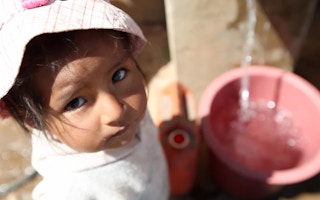With Asia Pacific seriously lagging on all 17 of the UN’s sustainable development goals (SDGs) there are doubts if the region will ever catch up.
The latest progress report shows the region is set to miss the 2030 target by a staggering 32 years with the key SDG 13 on climate action in reverse gear.
The report by the UN Economic and Social Commission for Asia and the Pacific (ESCAP) attributes the lag to the Covid-19 pandemic and other ongoing global crises.
But the SDGs were already stumbling even before the pandemic, mainly over inherent flaws that have remained intractable since they were first adopted in 2015 to end extreme poverty, provide clean water and sanitation and institute sound environmental management and mechanisms to cope with climate change by 2030.
Compromises made during the early and difficult negotiations with global leaders left fault lines that are now showing up in progress assessments.
The 2024 report particularly raises concern over the falling back of SDG 13 on climate action, which, if left unchecked, could result in mass migration, instability and conflict.
To limit global warming to 1.5 degrees Celsius above pre-industrial levels, industrial and other emissions must be halved by 2030. That would mean going beyond the plans, promises and platitudes heard at climate conferences.
As the climate crisis continues unabated, with global commitments lagging, national economies are being disrupted, affecting lives and livelihoods and undermining the other development goals. Clearly, SDG 13 needs priority as progress on all its targets are now derailed.
The ESCAP report suggests integrating climate action into national policies and strengthening resilience and adaptive capacity to cope with climate-related disasters. It calls for a ramping up of investment in infrastructure and renewable energy sources.
Attention also needs to be paid to SDG 7, which focuses on ensuring access to affordable and reliable modern sources of energy for all. Energy efficiency contributes directly or indirectly to achieving the other SDGs as it is connected to environmental sustainability and human growth.
Here’s where the problems of implementing the SDGs begin. It is the responsibility of individual national governments to implement and evaluate progress towards the SDGs and they often have conflicting political agendas.
Speaking at a webinar in January on energy evaluation for the SDGs, Edward Vine, scientist at the Lawrence Berkeley National Laboratory, in California, USA and an energy evaluator, said: “We have, over the years, been trying to focus on national governments having the capacity to do the evaluations – many people do not believe that it is possible to evaluate the SDGs.”
Dayyan Shayani, an ESCAP statistician, says that national plans in the region are not well integrated with the SDGs. Worse, he says, national plans may look good on paper but there is no way to ascertain if the targets are being achieved for lack of reliable data.
Climate action in reverse
Going by ESCAP’s data and assessments, progress on SDG 13 has definitely been reversing in the region. Shayani puts this down to increasing emissions plus the increasing impact of climate change in Asia Pacific.
There are other worrying trends, Shayani says. For example, while access to electricity has been greatly improving in the region, the share of renewable energy consumption has been falling in most countries. International support for renewable energy has also been on the decline since 2017.
When it comes to access to clean energy for cooking there has progress, but all too slow. Almost 1.2 billion people in the region do not have clean cooking fuels – the bulk them in Bangladesh, China, India and Pakistan. The target was for universal access to affordable, clean cooking solutions by 2030.
Clean cooking fuels such as liquid petroleum gas, ethanol and biogas are important because they have a positive impact on both health and environment goals as compared to biomass cookstoves and the use of solid fuels such as wood and charcoal.
The ESCAP report points to multiple disadvantages for those living in rural areas such as limited access to basic drinking water and sanitation facilities. Insufficient clean cooking fuels in these areas contribute to serious respiratory diseases, especially among women and girls.
Political will
What is obvious is that the UN lacks the leverage to compel national governments to follow the SDG framework. Policy decisions on development or environmental issues also appear too closely linked to winning elections in many Asian countries.
India’s coal-fired thermal plants, originally mandated to install flue gas desulphurisation units and other equipment by 2017, have been given extensions until the end of 2024 — when the country will hold general elections.
Despite these challenges and lack of progress in the region, the 2030 Agenda, according to ESCAP, “remains as relevant today as it was in 2015″.
“The 17 SDGs continue to provide a comprehensive framework for the bold, transformative action needed to build a greener, fairer, and better world by 2030,” the report says.
Such optimism may keep the show going and bridge the gap on some if not all the 17 SDGs in the six years to 2030. But governments in Asia Pacific must see the urgency of pursuing climate action and clean energy regardless of any goal.
This article was originally published on SciDev.Net. Read the original article.










